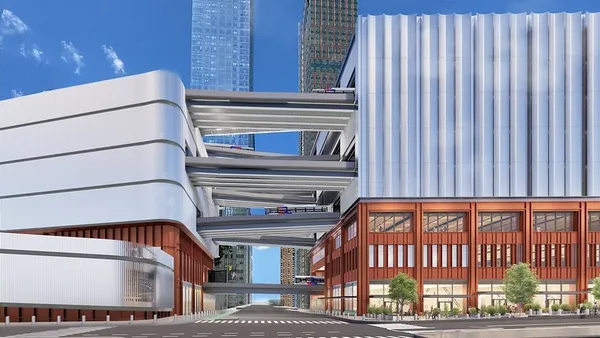Dive Brief:
- Sidewalk Labs, the urban innovation offshoot of Alphabet, has developed a generative design tool that applies machine learning and computational design to help overhaul urban planning and architecture.
- The tool can generate millions of comprehensive planning scenarios considering various data sets, like zoning regulations, existing space and physical qualities. Sidewalk Labs can then consider those scenarios for various quality of life criteria, like density, weather patterns, economics and walkability.
- According to a Medium post by Product Manager Violet Whitney and Designer Brian Ho, the machine learning produces a planning process that is "more holistic and efficient, helping planners and the community make the most informed decision possible."
Dive Insight:
Sidewalk Labs says the generative design tool isn’t meant to replace existing designers, but rather give them more planning options and consider more data than is currently possible. The tool could help cities, for example, see how one design option might maximize density but inadvertently block sunlight, or show how a creative design could best use existing space. The tool, Whitney and Ho write, could improve opportunities for community engagement and generate more discussion of city plans.
It also fits into Sidewalk Labs' goal to bring machine learning and flexibility to the urban design process. That approach will be put to the test in the company’s Quayside project in Toronto. The development is meant to not just show off data collection technology, but also showcase the potential of smart development, like underground waste collection, weather-adapting buildings and dynamic street pavement that can be modified to fit different needs.
Sidewalk Labs has also worked on street design principles, encouraging developers and planners to adapt to new mobility options by tailoring streets for different modes, separating them based on speed and introducing more flexibility.
The generative design tool will bring some of those same principles to the urban planning and zoning realm, helping developers make informed decisions about buildings from the start. Other cities have incorporated data software and 3D mapping to their zoning processes to help developers understand how their plans will impact citizens, and the Sidewalk Labs tool can take that a step further.









